The mechanism by which an octopus 'tasting prey' with a sucker is elucidated

Past research has revealed that '
Molecular Basis of Chemotactile Sensation in Octopus: Cell
https://www.cell.com/cell/fulltext/S0092-8674 (20) 31149-1
Octopus' suction cups hold its taste and touch sensors – Harvard Gazette
https://news.harvard.edu/gazette/story/2020/10/octopus-suction-cups-hold-its-taste-and-touch-sensors/
When It Comes to Octopuses, Taste Is for Suckers --The New York Times
https://www.nytimes.com/2020/10/29/science/octopus-arms-taste.html
So far, it has been found that the octopus's paws have the ability to distinguish whether the object they touch is food or not, but the details of how it works have not been clarified. So, a research team led by Harvard biologist Lena van Giesen put an octopus in one of the tanks separated by a plate with small gaps and a crab, which is the food for the octopus, in the other. We conducted an experiment to observe the octopus reaching for food through the gap.
The state of the experiment is as follows. In the aquarium containing crabs, there are a suction cup with nothing and a suction cup with crabs fixed, but the octopus's legs inserted through the gap pass through the suction cup with nothing. ..
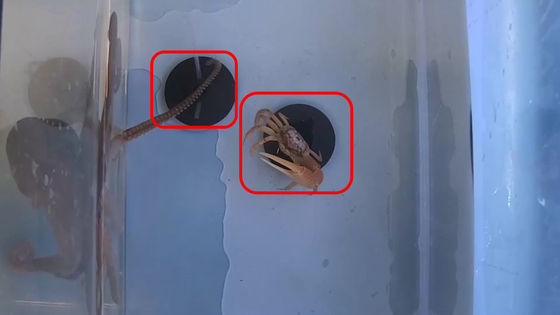
The suction cup with the crab fixed also passed through once, but ...
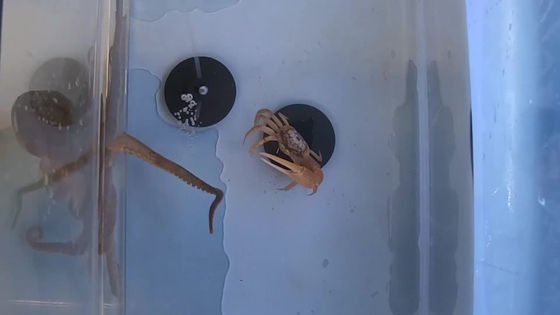
Perhaps he noticed the food, the octopus reached out to the crab again and used a suction cup to entangle the crab.
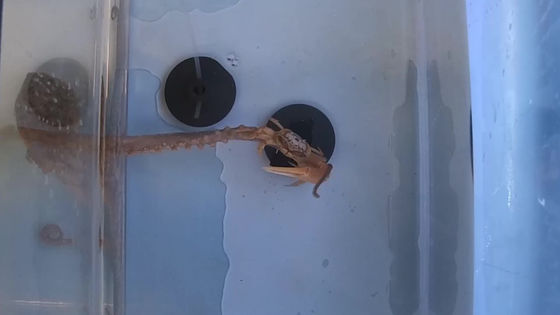
Since the crabs did not easily come off the suction cup, the octopus used one more leg to pull the crabs more and more.
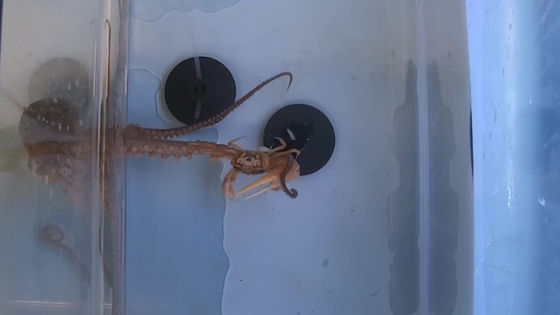
From this experiment, the research team thought that 'the sucker attached to the octopus's foot has the role of a chemical sensor and distinguishes between food and others,' the research team collected cells from the octopus sucker and collected cells. We analyzed in detail which cells respond to what stimuli. As a result, it was found that there are 'cells that detect only contact' and 'cells that have chemoreceptors that react with chemical substances' in the suckers of octopus.
The research team then integrated chemoreceptors isolated from octopus sucker cells into frog and human cells. Since frog and human cells do not originally have a function like octopus chemoreceptors, it is suitable for seeing the reaction of octopus chemoreceptors. The research team conducted an experiment in which the cells thus produced were exposed to various substances such as extracts, salts, sugars, and amino acids extracted from fish and shellfish that feed the octopus, and the chemical receptors of the octopus work on which chemical substances. I checked whether it was.
The researchers initially predicted that water-dwelling octopuses would sense 'water-soluble chemicals,' but this experiment allowed octopus chemoreceptors to react to 'water-insoluble chemicals.' I found out.
'Water-soluble chemicals move far from their source, which can be used by some living organisms to sniff out prey from a distance,' said Nicholas Bellono, co-author of the paper. There are things you can do, but if you can taste what you touch, it makes more sense to detect chemicals that are insoluble in water and do not move in the sea. '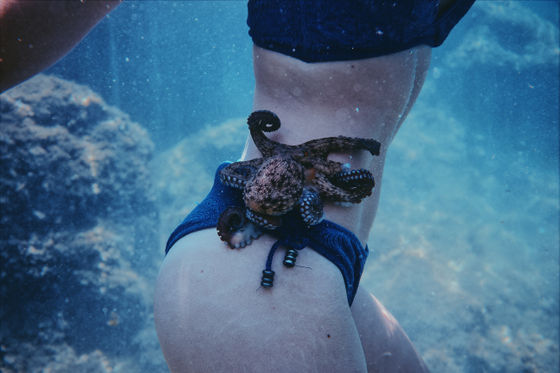
The research team has also found that sensory cells collected from octopus suckers cease to function when exposed to octopus ink. Regarding this, van Giesen commented, 'In certain situations, we may be filtering information that is important to life,' keeping in mind that the octopus will spray ink when it senses danger. did.
The research team plans to pursue further research on what kind of natural molecules the octopus sucker reacts with.
Related Posts:







